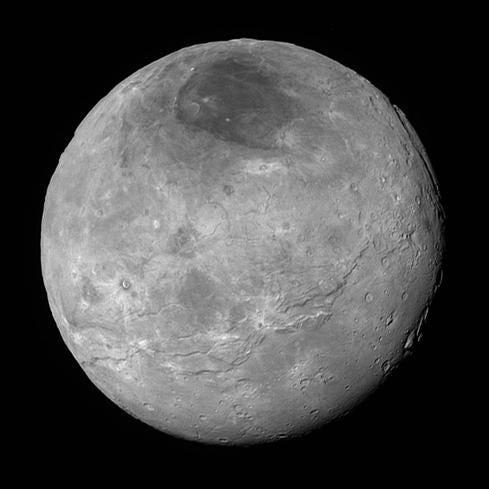NASA Discovery Program Eyes Venus, Trojan Asteroids MissionsNASA Discovery Program Eyes Venus, Trojan Asteroids Missions
NASA's Discovery program is narrowing down its list of potential missions, including several different trips to Venus, as well as a study of asteroids near Jupiter.


NASA's New Horizons Transmits New Pluto, Charon Images
NASA's New Horizons Transmits New Pluto, Charon Images (Click image for larger view and slideshow.)
Hot off a string of successful missions to the edge of the Solar System with New Horizons, and extraordinary discoveries on Mars, NASA is looking to keep the hits coming, releasing details of its plans to study five possible planetary missions.
The Discovery program, which requested proposals for spaceflight investigations in November 2014, has now narrowed down the possible missions from the original 27 plans. Eventually, the space agency plans to green-light one or two of these missions, which could cost about $500 million each.
Venus is high on the list of potential missions.
One of the proposals includes the Deep Atmosphere Venus Investigation of Noble gases, Chemistry, and Imaging, or DAVINCI for short. The spacecraft would study the chemical composition of Venus's atmosphere during a 63-minute descent in an attempt to provide answers about how the surface interacts with the atmosphere of the planet, and whether Venus is home to any active volcanoes.
Another mission to Venus -- Venus Emissivity, Radio Science, InSAR, Topography, and Spectroscopy (VERITAS) -- also made the short list, and would focus on producing high-resolution images of the planet's surface and the first maps of deformation and global surface composition.
Venus, the second planet from the Sun, is still somewhat of a mystery to scientists as its surface is completely obscured by a thick layer of clouds covering the surface.
Previous attempts to land a spacecraft on the surface have seen limited success in the past because the intense heat and pressure on the ground have destroyed probes shortly after touchdown.
Also on the list of programs is Lucy, which would be the first reconnaissance of the Jupiter Trojan asteroids, a large group of objects that share the orbit of the planet around the Sun.
Since the first Trojan was spotted in 1906 by a German astronomer, researchers have chronicled 6,178 of these dark, irregularly shaped bodies. Now, NASA hopes an up-close look could provide clues to the origin of the Solar System.
The Psyche mission would study the metallic asteroid of the same name, which NASA scientists believe was the survivor of a violent collision with another object.
Finally, the Near Earth Object Camera (NEOCam) mission would discover 10 times more near-Earth objects (NEOs), such as asteroids and potentially hazardous objects (PHOs), than all NEOs that have been discovered to date.
The NEOCam mission would also start to categorize these bodies, which include about 13,000 near-Earth asteroids (NEAs), more than a hundred near-Earth comets (NECs), and a number of solar-orbiting spacecraft and meteoroids.
[Check out these inspiring NASA images.]
"The selected investigations have the potential to reveal much about the formation of our solar system and its dynamic processes," John Grunsfeld, astronaut and associate administrator for NASA's Science Mission Directorate in Washington, wrote in a Sept. 30 statement. "Dynamic and exciting missions like these hold promise to unravel the mysteries of our solar system and inspire future generations of explorers. It's an incredible time for science, and NASA is leading the way."
Each investigation team will receive $3 million to conduct concept design studies and analyses, within an overall mission budget of approximately $500 million, not including launch vehicle funding or the cost of post-launch operations.
The space agency said it would make the final selections by September of next year for continued development leading up to launch.
About the Author
You May Also Like






